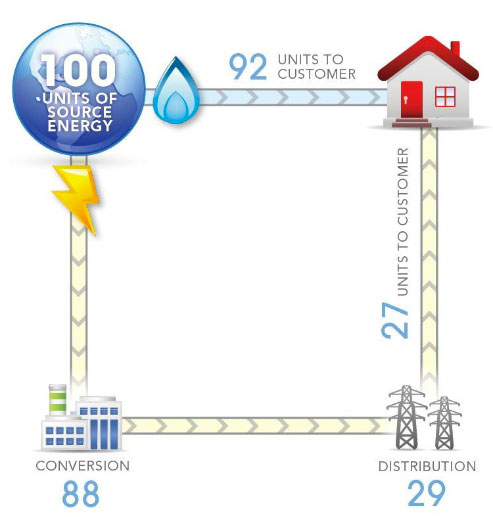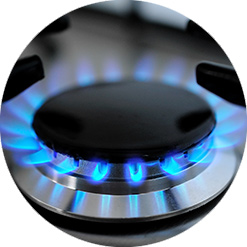NATURAL GAS 101
NATURAL GAS 101

Direct Use: More power less waste
While Natural Gas is replacing coal as the fuel of choice to generate electricity, homes and businesses can greatly improve efficiencies by choosing to use Natural Gas appliances.
Electricity must be generated offsite then delivered many miles away to homes and businesses. As a result, only 27% of the original energy produced arrives to the final destination. Natural Gas provides power at the point of use. It maintains about 92% of its usable energy. Using natural gas appliances for heating, water heating, cooking, and clothes drying saves consumers on their monthly utility bills and lowers greenhouse gas emissions. The NGA of Georgia has made as its mission to help customers understand and benefit from the direct use of natural gas.

Origins
Natural gas is usually found in deep underground reservoirs formed by porous rock. Over time, the remains of plants and animals decayed and built up into thick layers, sometimes mixed with sand and silt. These layers were buried under sand, silt and rock. Pressure and heat changed some of the organic material into natural gas.

Delivery
Natural gas is delivered throughout the country using a vast transmission pipeline system that is over 2 million miles. When this gas reaches a local gas company’s gate stations it is then distributed through gas mains, regulator stations and service lines until it reaches the meter (end user).

Pricing
Our nation’s strong supply position is the primary reason prices continue to be lower when compared to previous winters. The U.S. Department of Energy forecasted for the average residential gas customers winter indicates savings in annual heating costs of $248 compared to the higher-priced winter of 2008-2009. These savings represent a more than 30% advantage for consumers.
